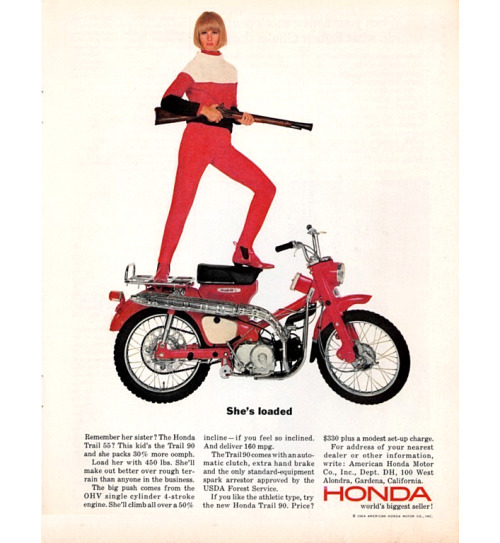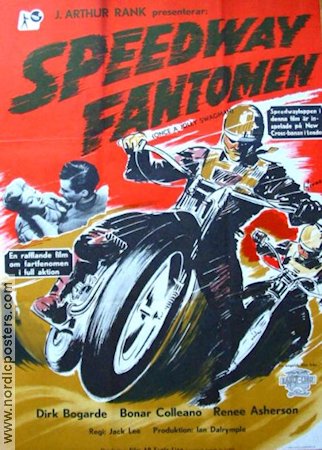

The scourge of beach blankets and volleyball nets, the bumbling, black-leather jacket-wearin' leader of one of Southern California's most infamous biker gangs (The Ratz and Mice) is born, Harvey Lembeck, aka Eric Von Zipper.
Appearing in six of the seven Beach movies (Muscle Beach Party being the one they were absent from) Eric Von Zipper and his gang of surfboard opponents did their best to ruin clubs, party's and romance of all those involved. Why, if it weren't for Professor Robert O. Sutwell and the Himalayan Suspension Technique they might have succeeded. The what?!
In the first Beach Party movie during an argument at Big
Daddys nightclub, the Professor is being threatened by Von Zipper so he quickly applies
his right index finger to a "key spot" on Zipper's left temple. This mysterious form of Far-Eastern self-defense -- which involves applying
pressure to some particular nerve in the victim -- results in putting them into
immediate state of temporary frozen unconsciousness. So, when Von Zipper is "frozen,"
it inevitably forces his gang to retreat, while carrying Lembeck off a member of the Ratz tells the crowd, "Eric Von Zipper will return."
Harvey Lembeck appeared on Broadway, the Silver Screen and television (Night Gallery, The Monkees and Man From U.N.C.L.E. to name a few) in a career that spanned over 30 years.
"Eric Von Zipper adores you. And when Eric Von Zipper adores somebody they stay adored."
EricEnequin (as a Rat named J.D. pompously pronounces "Eric
Von.Zipper will return.")




For the second time since a controversial American flag exhibit opened last month, protesters Saturday dismantled two of the displays showing American flags draped over a toilet and placed on the floor.
About 50 members of the “Vietnam Veterans Motorcycle Club” arrived on motorcycles, walked into the Phoenix Art Museum and removed the flags, said spokeswoman Amy Carr.
After removing the flags Saturday, the veterans carefully folded them, handed them to museum officials, then stood in line to write in a comment book placed in one of the displays. Before the flag was removed, visitors had to stand on the flag to write in the book.
“It’s insulting to the flag, insulting to America and insulting to us,” said John McFarland, a Vietnam veteran from Phoenix.
After an hour of what some might describe as heated debates with museum officials and other patrons, the protesters trickled out and the exhibits were reinstated.
Museum director Jim Ballinger defended the exhibit and said its controversial pieces will remain on display as scheduled,until June 16. "What this exhibit celebrates is freedom in America," he said. "We have a story to tell and we're not going to take away a crucial part of the story."
The always-entertaining House Speaker Newt Gingrich earlier this month jumped aboard the flag's bandwagon when he said he had declined an invitation to the exhibit, saying: “I don’t have to look at a U.S. flag in the toilet to know that it is wrong.”
Good 'ole Newt.




Dave Barr is born in Los Angeles, California, and left abandoned in the back seat of a car. After nine months in foster care, he was adopted by WWII Navy veteran Guy Barr and his wife, Lucille.
Dave Barr joined the US Marine Corps when he was 17 and served in Vietnam on a helicopter gunship. He earned 57 air medals, including a single-mission decoration for valor. After his discharge from the Marine Corp in 1972 he bought his first motorcycle, a ‘61 Harley-Davidson Panhead. He rode the Panhead coast-to-coast and then bought a new HD FX 1200cc shovelhead.
Still having the itch for something more, he served two years with the Israeli Parachute Regiment and one year in the Rhodesian Light Infantry. In 1981 while with the South African Defence Force riding in a military vehicle in southern Angola, his vehicle drove over an anti-tank mine and the resulting explosion cost him both of his legs, above the knee on the right and below the knee on the left. He spent nine months in a Pretoria military hospital, undergoing 20 operations, including four to remove his legs in stages, skin grafts, and agonizing physical therapy to learn to walk again. When he was released from the hospital, Barr volunteered to go back (?!) to the combat zone where he’d nearly been killed to finish his enlistment on prosthetic legs.
Barr mustered out in December 1982 and returned to his family home in West Covina, California. He took the Super Glide out of storage and refit it to accommodate his new life. He added an electric start and an overload spring to the brake pedal so he could ride with his artificial right foot resting on it. On his first ride, a casual thought occurred to him, and it put his life on a new course that would take him around the world and to some of its most extreme and challenging environments.
It was on the shovel that Barr would become the first double amputee to circumnavigate the globe. Seven years later he piloted the Super Glide out of Johannesburg, South Africa, on a 9,000-mile transcontinental ride to raise funds for the Leonard Cheshire Foundation, an international charity that assists disabled people. In September 1990, nine months after completing the African ride, Barr again left Johannesburg on the 18-year-old shovelhead, he turned north and kept going. Riding six of the world’s continents—he couldn’t find a way to get the bike to Antarctica—Barr logged 83,000 miles (including a 13,000 mile Atlantic to Pacific segment across Northern Europe and Siberia) through the world’s most dangerous and unforgiving regions during what turns out to be a 3½-year trip.
And then as a million others are whining about their sore knee, he decides, "fuck this", and sets a second world record for riding the so-called Southern Cross. In just 45 days during 1996, he completed the first motorcycle journey ever between the four extreme geographical corners of the Australian continent.
Dave Barr was inducted into the Motorcycle Hall of Fame in 2000 not only for his world record setting exploits, but also for the charity work he has done for the disabled along the way.

William Raymond Amm is killed during the 1955 Nations Grand Prix in Italy.
Originally from Salisbury in Southern Rhodesia, Ray Amm started grass-track racing near Salisbury when he was 17 years old after purchasing an 500cc AJS motorcycle. Being a novice to both motorcycles and racing, he finished last in his first race. So, blaming the bike, a we all do, the AJS was quickly replaced with a Triumph. Soon he found himself finishing in the middle of the pack, then fifth, fourth, third...
The purchase of a brand new Norton motorcycle allowed Amm to enter the prestigious 1949 Port Elizabeth 200 Motor-Cycle Race in South Africa and despite breaking the lap-record he finished in 17th place when the clutch started to slip. Refusing to call it quits he entered the 1950 Port Elizabeth 200. Ray finished in 1st place for the 500cc race and set a new lap record of 95.86 mph. Another win followed in the 500cc class for the 1951 Port Elizabeth 2000 Race despite suffering carburation problems. After these successes the Salisbury Motor-Cycle Club helped with his passage to compete in Europe.
Amm finally moved from the works Norton motorcycles to the factory MV Agusta racing team. His debut race for MV Agusta was to be the 1955 Easter Monday race meeting at the Autodromo Enzo e Dino Ferrari in Imola, Italy. Riding a 350cc four-cylinder MV Agusta in the Coppa d'Oro Shell Race, Amm lost control at the Rivazza Corner as he pursued Australian Ken Kavanagh and crashed in the slippery conditions.
William Raymond Amm died of his injuries on the way to hospital. He was 27.



"Little Honda" is recorded at the legendary Western Studios in Hollywood, California.
Written by Brian Wilson and Mike Love of the The Beach Boys and released on their 1964 album All Summer Long, and also featured on their EP, Four by The Beach Boys. It was covered by The Hondells, whose recording peaked at #9 on the U.S. pop singles chart, and later by Jan & Dean, Yo La Tengo, the Queers and the Demonics. The song pays tribute to the small Honda and its ease of operation, specifically the Honda Super Cub.
The Honda Super Cub, with it's four-stroke single-cylinder engine ranging in displacement from 49 to 109 cc has been in continuous manufacture since 1958. With production of the little bugger surpassing 60 million, the Super Cub is the most produced motor vehicle in history.
"Little Honda" peaked at #65 on the Billboard Hot 100 for the Beach Boys but became an international favorite, rising to #1 in Sweden and #8 in Norway in early 1965 and concurrently #44 in Germany.
In the US charts the Beach Boys' recording was particularly popular in Los Angeles, Washington DC and Minneapolis where it climbed to #2 in each city.
The Super Cub's 1960's US advertising campaign, "You meet the nicest people on a Honda", had a lasting impact on Honda's image and on American attitudes about motorcycling, and is considered a classic case study in marketing.
I remember that ad always made me want to puke.
























